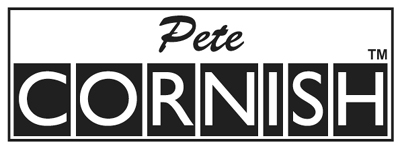
Unit 5, Silveroaks Farm, Hawkhurst Lane, Waldron, Heathfield, E.Sussex, UK, TN21 0RS
Tel (0)1435- 813393, International +44 1435 813393
VAT Reg. No. GB 241 7291 72

Unit 5, Silveroaks Farm, Hawkhurst
Lane,
Waldron, Heathfield, E.Sussex, UK, TN21 0RS
Tel (0)1435- 813393, International +44 1435 813393
VAT Reg. No. GB 241 7291 72
JIMMY PAGE'S GUITAR/EFFECTS/AMPS FLOOR SYSTEM
After extensive testing and comparisons of
various effects pedals and amplifiers by Jimmy and his technician we were asked
to build an effects system that would operate with equal efficiency in every
country in the world and incorporate all Jimmy's chosen effects and route the
signal to several amplifiers.
Most of the effects had so called "true bypass" footswitches and we decided to
investigate whether we could use this system with the entire collection of
effects and amps as so many manufacturers offer the "true bypass" as the
ultimate type of switching.
Our findings were that the "true bypass" did NOT create unified signal level or
tone from the guitar for the following reason:
Take for instance a 5m guitar cable linked to six pedals, each linked by a 1m
cable, and then on to the amp by say a 15m cable. If all pedals have "true
bypass", and are off, then the total cable length hanging on the guitar output
will be 25m. This will cause a huge loss of tone and signal level particularly
if the guitar is a vintage type with low output. The amp volume is then turned
up and the treble control increased to compensate for the losses. The inherent
background noise now increases by the amount of the gain and treble increase and
is usually, in my experience, too bad for serious work. If one of the pedals is
now switched on, then it's high input impedance (and usually low output
impedance) will buffer the output cables from the guitar; the signal level and
treble content will rise due to the removal of some of the load on the pickups
(i.e. 6m instead of 25m of cable). If that pedal was for example a chorus or
delay, devices which are usually unity gain, then the overall signal level and
tone will vary each time an effect is added...not a very good idea.
The "Pete Cornish System", which we devised in the early 70's, is to feed the
guitar into a fixed high impedance load, which is identical to the amp input,
and then distribute the signal to the various effects and amps by low impedance
buffered feeds. This gives a constant signal level and tonal characteristics
from the guitar, which do not change at all when effects are added. The proof
that this works are in the recordings of our clients: Roxy Music; The Police;
Queen; Pink Floyd; Bryan Adams; Lou Reed; Dire Straits; Paul McCartney; Sting;
Judas Priest; Black Sabbath....
For Jimmy's stage system, we fitted additional high impedance pre-amps between
each effect to further isolate each one from the next in line. We also provided
two send/return circuits so that new effects could be added at a later date and
another send/return to Jimmy's Echoplex. The four isolated outputs to the stage
amplifiers each had a line driver fitted to overcome the very long across-stage
cables (total length 64m).
To ensure that the sound of the guitar and effects would remain constant at each
venue across the world we designed "super regulated" dc power supplies to suit
both the effects and the audio frequency pre-amps. Each effect and pre-amp had
it's own isolated dc feed which we know helps to prevent cross-leakage of effect
signals: for example upper harmonic distortion products can leak into clean
chorus circuits through a common power supply if this precaution is not taken.
Jimmy was very pleased with his "Pete Cornish Guitar/Effects/Amps System" and it
has proved most reliable and convenient to set up, as all the effects and
routing are permanently in the correct
order and it is so simple to "just plug in and play..."
GUITAR SYSTEM S/No: 257
DESIGNED AND BUILT BY PETE AND LYNDA CORNISH
OCTOBER 1993
Signal Routing:
Guitars connected to Pete Cornish Input Selector and Line
Driver (off stage) via Pete Cornish HD Guitar Cables
Selected Guitar Signal to Effects / Amps Pedalboard via Pete Cornish Custom
Signal Cable Loom (Loom includes Amp Feeds and Remote Mute Control)
Pedalboard Input - Unity Gain
Emergency Automatic Mechanical Bypass to Output #1 in case of Power Failure
Send / Return to Spare FX #1 with Bypass Switch
Roger Meyer Voodoo Fuzz - Removed in January 1996 - Replaced by Amp Lead switch
for 2 off Fender Tone Master
MXR Phase 90 with Bypass Switch
Yamaha CH-10Mk II Chorus with Bypass Switch
Send / Return to Spare FX #2 with Bypass Switch
Boss CE-2 Chorus with Bypass Switch
Jen Cry-Baby Wah with Bypass Switch
Digitec WH-1 Whammy + Pete Cornish Linear Boost 0/+20dB with Bypass Switch
Send / Return to Echoplex EP3 (modified by Pete Cornish) with Adjustable Gain
and Bypass Switch
Linear Boost all Outputs 0/+20dB with Bypass Switch
Master Volume
Local and Remote Mute All Outputs
3 off Outputs to Amps - Output #4 added January 1995
115V Output to Echoplex
AMPS:
2 off Fender Tone-Master S/Nos: 0869/0864
2 off Vox AC30 (Original T.Boost Model)